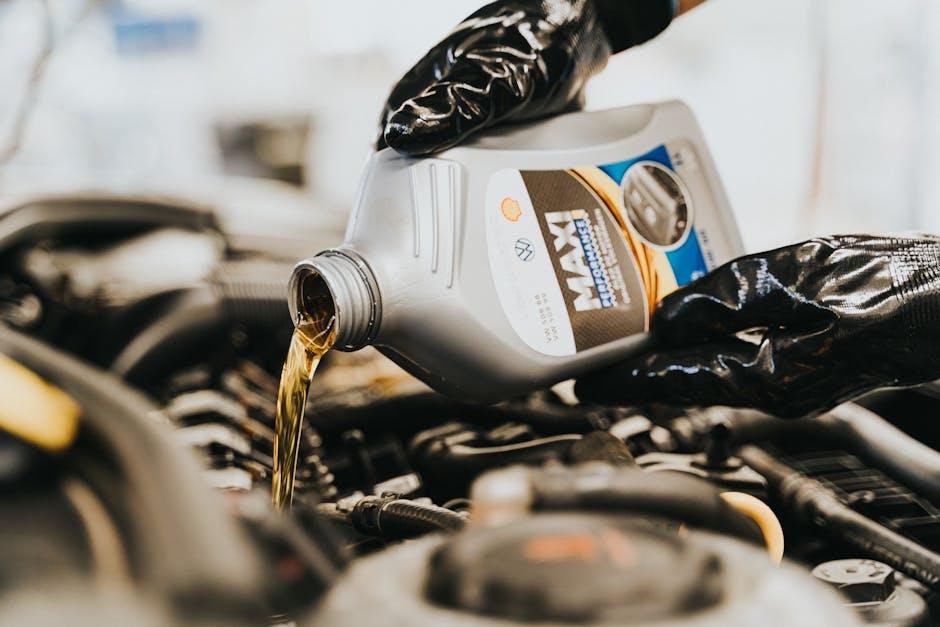Title: “How Often Should You Change Your Oil? Decoding the Lifeblood of Your Engine”
Introduction:
In the intricate symphony of automotive maintenance, engine oil plays a crucial role as its lifeblood—ensuring smooth operations and longevity of vehicle performance. Yet, amidst the hustle and bustle of modern life, the question looms large: How frequently enough should you change your oil? Like a well-tuned instrument, getting this rhythm right can make all the difference between a harmonious drive and a cacophony of engine troubles. In this article, we’ll explore the factors that influence oil change frequency, debunk common myths, and offer practical guidelines that empower you to keep your engine purring.From the seasoned car enthusiast to the everyday driver, understanding the nuances of oil maintenance is essential for ensuring your vehicle runs smoothly for years to come. Join us as we uncover the secrets to optimal oil care, helping you hit that sweet spot between performance, efficiency, and cost-effectiveness.
Understanding Oil Change Intervals for Your Vehicle
Determining the right time to change your oil is crucial for maintaining the health of your vehicle. The interval for an oil change can depend on several factors, including vehicle make and model, type of oil used, and driving conditions. Here are some key considerations to keep in mind:
- Manufacturer’s Recommendations: Always refer to your owner’s manual for the manufacturer’s specific guidelines on oil change frequency.
- Oil Type: Synthetic oils frequently enough allow for longer intervals between changes compared to conventional oils.
- Driving Conditions: If you frequently drive in stop-and-go traffic, tow heavy loads, or operate your car in extreme temperatures, your vehicle may require more frequent oil changes.
To make it easier to understand oil change intervals, here’s a simplified comparison of recommended mileage based on oil type and driving conditions:
| Oil Type | Standard Conditions (miles) | Severe Conditions (miles) |
|---|---|---|
| Conventional | 3,000 – 5,000 | 2,500 – 4,000 |
| Semi-Synthetic | 5,000 – 7,500 | 4,000 – 6,000 |
| Synthetic | 7,500 – 15,000 | 5,000 - 10,000 |

The Impact of Driving Conditions on oil longevity
Driving conditions play a crucial role in determining how often your oil needs to be changed. factors such as climate, traffic patterns, and terrain can substantially affect the degradation of engine oil over time.For instance, frequent stop-and-go situations can lead to more contaminants entering the oil system, resulting in quicker breakdown. In contrast, highway driving usually maintains a more consistent temperature and pressure, potentially extending the life of your oil. Additionally, extreme temperatures—whether scorching heat or frigid cold—can influence oil viscosity and overall performance.
Understanding your driving habits can help you make more informed decisions regarding oil maintenance.Here are some characteristics of different driving conditions:
- Short Trips: Frequent short trips can lead to increased moisture and sludge buildup.
- Highway Driving: Longer, steady drives can keep oil cleaner for a longer period.
- Heavy Loads: Towing or carrying heavy loads can accelerate oil breakdown.
- Extreme Weather: Cold weather can thicken oil,while hot weather can thin it,impacting performance.
| Driving Condition | Oil Longevity Impact |
|---|---|
| Short Trips | Decreased lifespan due to increased contaminants. |
| Long Highway Drives | Extended lifespan due to consistent engine temperature. |
| Stop-and-Go Traffic | Reduced oil life; more frequent changes required. |
| Towing | Increases oil stress, requiring more frequent changes. |

Choosing the Right Oil Type for Optimal Performance
When it comes to maintaining your vehicle’s health and performance, selecting the proper oil type is crucial. Different engines have unique requirements, so understanding the specifications and benefits of various oil types can elevate your vehicle’s performance. here are some options to consider:
- Conventional oil: a standard choice for engines with low mileage and simpler mechanics.
- Synthetic Oil: engineered for advanced performance and longevity; ideal for high-tech engines and extreme conditions.
- High-Mileage Oil: formulated with additives to care for older engines, helping to reduce leaks and oil consumption.
- Blended Oil: a combination of synthetic and conventional oils, offering a balanced performance at a competitive price.
To make an informed decision, it’s essential to check your vehicle’s manual, which outlines the recommended oil specifications. additionally,you might want to consider a viscosity chart to ensure that the oil you choose matches the climate and driving conditions you encounter. Below is a simple table providing examples of oil viscosity ratings and their typical uses:
| Viscosity Rating | common Uses |
|---|---|
| 0W-20 | Modern fuel-efficient engines |
| 5W-30 | Most vehicles,good cold weather performance |
| 10W-40 | higher temperature performance,older engines |

Recognizing Signs That Indicate an Oil Change is Needed
Paying attention to your vehicle’s behavior can save you from unexpected breakdowns and costly repairs. Monitor your engine’s performance; if you notice a decrease in power or increased engine noise, it might potentially be time to check your oil. Another crucial sign is the appearance of dark,gritty oil on the dipstick. Fresh oil is typically a golden, translucent color. If it’s thick,black,or has a burnt smell,it indicates the oil has degraded and is less effective at lubricating your engine.
Additionally, keep an eye on your oil levels. If you find yourself frequently topping off your engine oil,it could be a sign of a leak or that the oil is breaking down more rapidly than normal. Check for oil spots or puddles under your vehicle, which can suggest a leak.if the oil change light on your dashboard illuminates, don’t ignore it. This warning is designed to alert you that maintenance is due,as running low on oil can lead to severe engine damage.
Closing Remarks
understanding when to change your oil is not just a matter of adhering to a schedule; it’s about nurturing the heart of your vehicle and ensuring its longevity. Whether you follow the traditional mileage guidelines or monitor the condition of your oil more frequently, staying attuned to your engine’s needs can save you time, money, and the hassle of unexpected repairs.
As technology advances and new oils are formulated, the rules may bend, but the fundamentals remain the same: regular maintenance is key to keeping your engine purring smoothly. So, take a moment to reflect on your driving habits, consult your owner’s manual, and establish a routine that works best for you and your vehicle. After all, a well-cared-for engine is not just an investment in your car; it’s a commitment to safer, more reliable journeys ahead. Drive on,with the assurance that you’re keeping the wheels of your automotive life turning smoothly.


